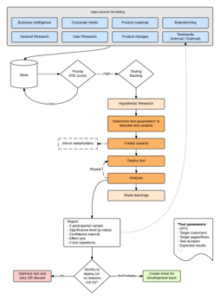In this article we delve into the pivotal role a business analysis plays in steering your digital transformation. By making informed decisions while redefining your digital journey, organizations can ensure successful adoption of new technology.
Deploying an ERP is not Digital transformation but many digital journeys start with or involve the deployment of an ERP system. With many claims of failure in ERP deployments, addressing why they fail is crucial for success in this complex landscape.
While pinpointing a singular cause for ERP failures is challenging due to the myriad ways and situations contributing to them, the reported failure rates, potentially as high as 70%, emphasize the complexity. Although not witnessed in the SME space, this article underscores the importance of a digital transformation strategy, even if ERP deployment isn't immediate.
The article approaches the issue by exploring how selected implementers may increase costs, stressing the need to avoid design mistakes that can inflate expenses. By understanding how implementation consultants increase costs, SMEs can protect themselves from overpayments, ensuring project control and reducing the chance of failure. Whether deploying ERP or already in the project phase, this article offers valuable insights to navigate challenges and succeed in your digital transformation journey.
 Have you ever forgotten to pick up a “significant other” in some circumstance? You are almost home, maybe even about to sit down after closing the front door and the sudden fear of death hits you as you remembered “Oh no!!!’? You rush out in a hurry and bolt! If you got there without missing a beat, you are safe but if you miss, it’s time to figure out how you are going to smooth this one over! It can get even worse if a `significant other` realizes you forgot them! You are in the dog house (male or female), and getting out is usually costly and time consuming. Yes, oversights drive cost and time investments. “Mistakes” do not discriminate, they cost us, every time!
Have you ever forgotten to pick up a “significant other” in some circumstance? You are almost home, maybe even about to sit down after closing the front door and the sudden fear of death hits you as you remembered “Oh no!!!’? You rush out in a hurry and bolt! If you got there without missing a beat, you are safe but if you miss, it’s time to figure out how you are going to smooth this one over! It can get even worse if a `significant other` realizes you forgot them! You are in the dog house (male or female), and getting out is usually costly and time consuming. Yes, oversights drive cost and time investments. “Mistakes” do not discriminate, they cost us, every time!
ERP projects and their budgets have this concern as well. Yes, “extras” drive additional work not included in the original project agreement. In ERP circles they are called “Project Change Control” and other real cool names that all say, you agree to pay more as this was a mistake your team made, sign here!
ERP budgets and delivery times tend to be negatively impacted by errors in planning. ERP projects and their budgets can grow as mistakes made by the implementation teams grow. Controlling the mistakes your team makes can save significant cost and time. It’s the vendors responsibility to control the mistakes their team makes.
The two primary sources of additional costs for clients are errors in design documentation and unforeseen changes during a project. Mistakes in workflows or overlooked client needs may necessitate adjustments, impacting both cost and timeline. All of this is happening to a back drop where your business operations continue during the implementation stages. Closing doors is rare and predictable.
If one can control the number of mistakes your team makes, you can effectively control the cost over runs within your project. To manage costs, controlling team mistakes is key. Given the complexity of ERP implementations influenced by digital transformations, anticipating errors is challenging. This article aims to demystify the process, providing insights on identifying and in many cases, avoiding mistakes altogether, rendering the need to identify them obsolete.
Avoiding or significantly reducing mistakes in a project requires anticipating challenges. The critical starting point is selecting the right fitted organizational solution. Mistakes in this phase, especially in choosing long-term business automation solutions, can have lasting repercussions. SMEs must avoid frequent ERP platform changes due to their disruptive and costly nature. Errors in software selection can profoundly impact the project’s success, potentially leading to ERP project failure.
Underestimating the software selection process can result in costly mistakes, jeopardizing project success as solutions may not be a good fit when requirements are revealed, or even causing a complete failure. Understanding the reasons behind this is essential.
So, taking the software selection process lightly, your team could already be making mistakes that could cost you more money than anticipated, or a failed project all together. Let see why.
To purchase software for your SME, understanding your team’s needs for efficiency and process achievement is crucial. Despite owners often asserting, “No one knows my business better than me,” this mindset can lead to more expensive implementations. SMEs foster close-knit teams with decision-making flexibility. Owners may overlook subtle changes made by dedicated teams, leading to mistakes which can lead to increased costs, and delays.

Achieving value requires a strong grasp of departmental correlations for business objectives, aligned with strategic goals. Digital transformation strategies include a comprehensive business analysis , which ensures software procurement aligns with workflows and requirements, making the selection process practical.
Having insight to the relationships and requirements of the departments within the organization, makes selecting software a practical selection process. Inviting vendors to demonstrate fit puts the burden on them, shifting your focus from marketing materials to what’s really under the hood. Ultimately, insight into departmental relationships and requirements streamlines software selection, compelling vendors to prove their solutions’ fit for the your organization.
 Performing a business analysis enhances cost efficiency and reduces the risk of investing in unsuitable software. Understanding current processes, pain points, and future requirements empowers decision makers to ask pertinent questions, steering suppliers away from marketing materials. Informed decisions lead to cost savings by avoiding expensive software purchases requiring extensive customizations (don’t be afraid of some customizations, you just don’t want to customize everything complex). Conducting the analysis on an as-you-go basis doesn’t maximize these benefits, and doing it after software selection may harbor hidden mistakes.
Performing a business analysis enhances cost efficiency and reduces the risk of investing in unsuitable software. Understanding current processes, pain points, and future requirements empowers decision makers to ask pertinent questions, steering suppliers away from marketing materials. Informed decisions lead to cost savings by avoiding expensive software purchases requiring extensive customizations (don’t be afraid of some customizations, you just don’t want to customize everything complex). Conducting the analysis on an as-you-go basis doesn’t maximize these benefits, and doing it after software selection may harbor hidden mistakes.
Aside, doing the analysis on an as-you-go basis, never realizes this benefit to its fullest. On the other side of the coin, doing the business analysis after you have selected the software, suggests, mistakes may already be “sitting in waiting”.
 “Requirement prioritization” is better achieved when workflows are fully documented as this organized report helps decision-makers identify and prioritize key organizational needs. This insight aids in selecting a software solution that directly addresses critical business requirements, maximizing return on value. Clear and prioritized requirements guide decision makers to focus on software that aligns with specific needs, enhancing outcomes in ERP implementations. While decision-makers often prioritize this aspect, measuring the true “additional benefit” to pre-implementation analysis is challenging. Nevertheless, having insights into the organization’s workflow is likely to bring added benefits.
“Requirement prioritization” is better achieved when workflows are fully documented as this organized report helps decision-makers identify and prioritize key organizational needs. This insight aids in selecting a software solution that directly addresses critical business requirements, maximizing return on value. Clear and prioritized requirements guide decision makers to focus on software that aligns with specific needs, enhancing outcomes in ERP implementations. While decision-makers often prioritize this aspect, measuring the true “additional benefit” to pre-implementation analysis is challenging. Nevertheless, having insights into the organization’s workflow is likely to bring added benefits.
 While efficiency is no longer the sole focus of business analysis due to shifting goals in digital transformation, it remains a crucial aspect of your deployment journey. Conducting an analysis beforehand provides a deeper understanding of existing processes, uncovering inefficiencies, bottlenecks, and improvement opportunities. This proactive approach allows decision makers to select a solution that not only meets requirements but also optimizes operations or achieves needs through minimal customizations. The goal isn’t to find a one-size-fits-all solution, but rather one that minimizes the need for extensive customizations, can deliver increased productivity and reduced costs over time. Avoiding mistakes in this phase significantly contributes to a successful deployment, sparing the need for numerous change control procedures in an as-you-go scenario.
While efficiency is no longer the sole focus of business analysis due to shifting goals in digital transformation, it remains a crucial aspect of your deployment journey. Conducting an analysis beforehand provides a deeper understanding of existing processes, uncovering inefficiencies, bottlenecks, and improvement opportunities. This proactive approach allows decision makers to select a solution that not only meets requirements but also optimizes operations or achieves needs through minimal customizations. The goal isn’t to find a one-size-fits-all solution, but rather one that minimizes the need for extensive customizations, can deliver increased productivity and reduced costs over time. Avoiding mistakes in this phase significantly contributes to a successful deployment, sparing the need for numerous change control procedures in an as-you-go scenario.
 An often-overlooked yet costly mistake is neglecting team involvement in building the solution. Performing a business analysis before implementation allows early engagement of your team, improving change management and user adoption. Identifying challenges and risks early on, especially in replacing software critical to workflows, provides an opportunity to involve stakeholders and end-users. Decision-makers gain insights into end-user needs, expectations, and concerns, fostering understanding and proactive change management strategies. Team ownership enhances the likelihood of successful adoption, reducing mistakes as workflows are refined and avoiding user pushback. Recognizing and addressing resistance to change is pivotal throughout the implementation process.
An often-overlooked yet costly mistake is neglecting team involvement in building the solution. Performing a business analysis before implementation allows early engagement of your team, improving change management and user adoption. Identifying challenges and risks early on, especially in replacing software critical to workflows, provides an opportunity to involve stakeholders and end-users. Decision-makers gain insights into end-user needs, expectations, and concerns, fostering understanding and proactive change management strategies. Team ownership enhances the likelihood of successful adoption, reducing mistakes as workflows are refined and avoiding user pushback. Recognizing and addressing resistance to change is pivotal throughout the implementation process.
Incorporating scalability and future growth goals involves analyzing long-term organizational objectives and scalability requirements—a starting point encouraged by digital transformation. Rather than solely focusing on immediate cost savings, prioritize the overarching profitability goal. Emphasize where you aspire to go to avoid cutting critical costs essential for improved profitability. In this mindset, decision makers can choose a flexible software solution adaptable to evolving business needs and future growth, minimizing deployment mistakes. A business analysis aids in anticipating future needs and growth opportunities, preventing quickly outgrowing the software and saving the organization from costly migrations—an avoidance of yet another potential mistake in the deployment process.
 Decision makers, by evaluating factors like security, compatibility, and vendor reputation, can identify and mitigate potential risks associated with software procurement. This informed approach ensures the selected software aligns with essential criteria, reducing the likelihood of costly security breaches, software failures, or vendor-related issues. These steps eliminate or avoid mistakes that could impact the organization long after signing the project into effect.
Decision makers, by evaluating factors like security, compatibility, and vendor reputation, can identify and mitigate potential risks associated with software procurement. This informed approach ensures the selected software aligns with essential criteria, reducing the likelihood of costly security breaches, software failures, or vendor-related issues. These steps eliminate or avoid mistakes that could impact the organization long after signing the project into effect.
In summary, conducting a business analysis before initiating your ERP project yields significant cost savings by preventing mistakes throughout the implementation stages. Information gathering during implementation is not more cost-effective, as it’s essential for the process. The arguments emphasize the benefits of foresight, indicating that conducting information gathering during implementation may lead to more mistakes due to a lack of foresight, resulting in higher costs and longer delivery times.
In conclusion, early business analysis empowers decision-makers with vital information for sound decision-making. It was explained that the benefits are derived from;
- Align business goals. The current interactions between “desks” are well understood and this gives you a strong understanding of the tools and features selected applications should bring to the table. Vendors can be forced to prove their solution fits your organization and typically, at their cost.
- Cost efficiency is improved as you understand the requirements, and vendors can be encouraged to prove their solutions will work before you sign.
- Establishing priorities on deliveries result in better allocation of resources to higher priority requirements getting the organization “up and running” faster. This encourages high ROI (return on investment).
- Process optimization and efficiency improvements are understood and vendors can be encouraged to demonstrate how they address these challenges, at their cost.
- Change management and user adoption is greatly supported by delivering opportunities to getting your team involved before any buying decision is made.
- Scalability and future growth expectations can now be included in the bidding process as these are understood at the time of the selection process.
- Reducing risks businesses face from relationship and other similar factors when selecting your ERP partner can be avoided as you have the time to study these interactions before buying.
Despite seeming counterintuitive, performing a business analysis pre-software selection proves the most cost-effective approach, providing insights to avoid costly mistakes and improve ERP implementation success.
The final document serves as a snapshot of the organization’s current state, and in today’s digital transformation era, aligning goals and aspirations is crucial. Starting from the current position and working towards long-term goals reveals the technology gap, and the business analysis becomes the strategy to bridge it—a dynamic roadmap for digital transformation. This strategy should evolve, mirroring the organization’s growth, requiring periodic review for continued relevance and success.
DPD Software is a CDAP approved organization. We will be happy to assist you with your application if assistance is need. Contact us using the box below or by filling out and submitting your request using our Contact Us page. There is no charge for this service
For detailed information on the CDAP program click here.


